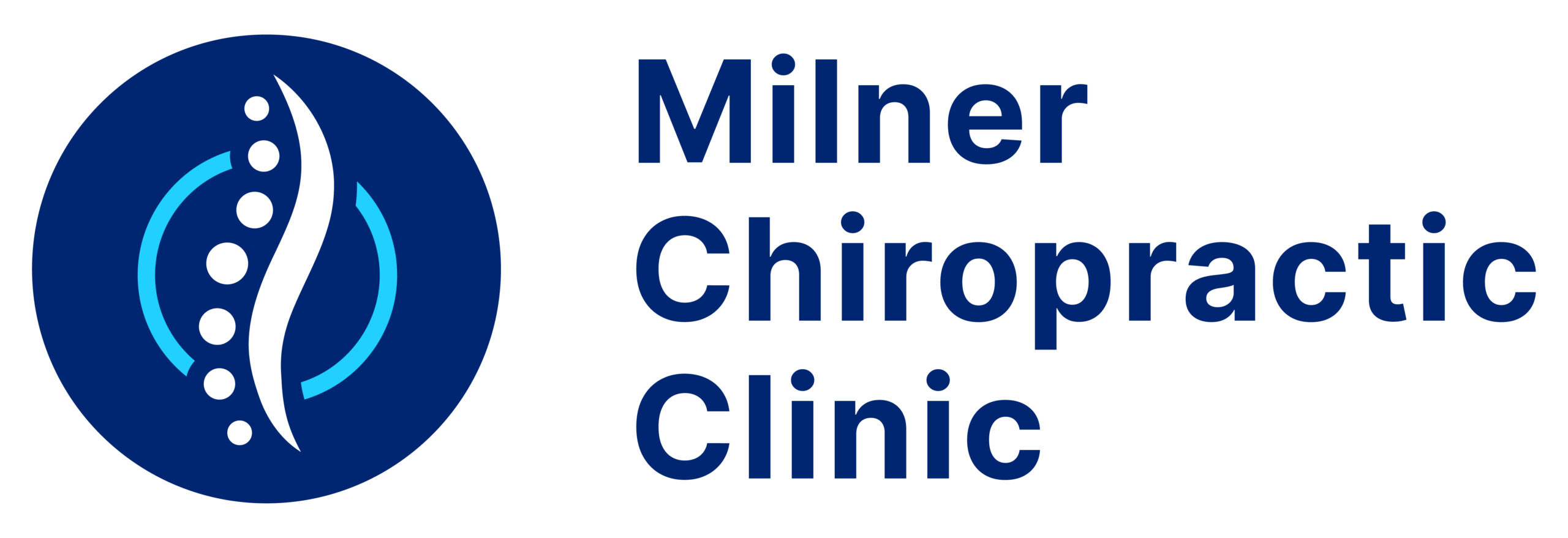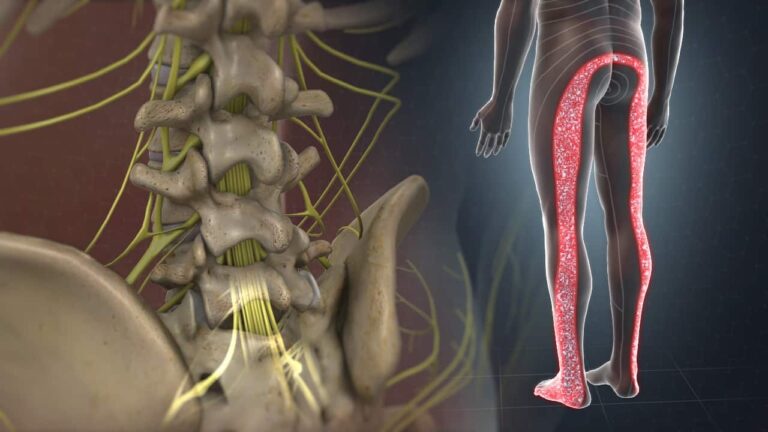How to Treat Sciatic Pain and Herniated Discs
The majority of cases of sciatic pain go away with time and proper treatment. Approximately 80-90% of cases will get better within 4-8 weeks and without surgery. Managing sciatic pain depends on how new the symptoms are, and depends on if the sciatica is in the acute phase, sub-acute phase, or chronic phase.
Acute Phase of Sciatic Pain
In the acute phase of a sciatica pain episode – pain management is vital. If your sciatic pain is caused by a herniated disc, it will take a certain period of time for that disc to resorb and return back to normal. In the meantime, pain can be excruciating, and the key is to limit the pain until the disc heals on its own. Pain reliving medication such as ibuprofen and naproxen can be useful at this stage, however these should be prescribed on advice from your family doctor.
3 Tips for Managing Acute Sciatic Pain
Body Positioning
We usually find that sciatic pain has a directional preference. It is usually aggravated by movement in one direction (usually a flexed forward position). At a very basic level, when your sciatic pain is acute, AVOID the aggravating position. For example, if pain is aggravated with flexion – try positioning yourself in extension (lying prone) or lying on your side.
Do Not Stretch
When we are in pain, our first instinct is to stretch and lengthen the area. This is because in most circumstances, a stretch activates relieving chemicals in muscles giving relief. However aggravated or injured nerves do not like compression, or tension. Stretching will create tensile forces on the sciatic nerve which can actually lead to more pain. Additionally, when patients try to rotate their lower back when they have sciatica, they are actually causing rotational stress on their lumbar discs which can make the condition worse.
Short Walks
It may seem counterintuitive – but after 2-3 days of acute sciatic pain, it is imperative to try walking for short durations. We are not recommending to go on a long hike for 3 hours. However walking down the hallway a couple times, or walking down the street for a short distance can help re-activate the muscles of the core and spine.
Each step that you take, the muscles surrounding the lumbar spine have to cycliclaly activate and relax to move your body forward. This in turn stabilizes the spine. If a patient stays in bed for a week or longer, all the muscles of the spine and body will atrophy, hence creating even less stability around the spine. We recommend short duration walks a couple times per day, if the patient is able, to reactivate the spinal muscles.
7 Pain Relieving Exercises for Acute Sciatic Pain and Disc Herniations:
As we mentioned previously, sciatica is usually aggravated with low back flexion. Flexion puts more pressure on the lumbar discs, which press on the sciatica nerve. These exercises do the opposite, creating less pressure on the discs.
Prone Position
- Use a yoga mat, or firm mattress
- Lie on your stomach, hands crossed under the chin
- Lie in this position for 15 minutes, change positions
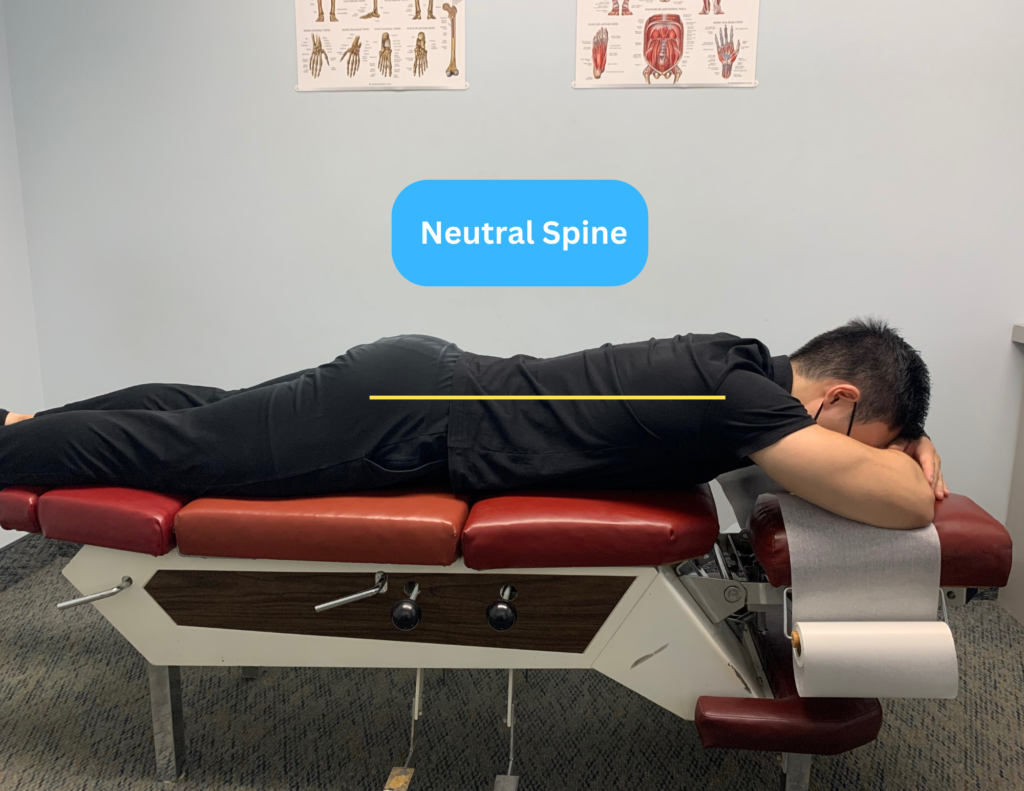
Figure 1. Prone Position
Prone Press Up
- Starting in the prone position, place your elbows on the mat
- Press up so that the chest leaves the table
- Think about sagging the belly button towards the table
- Press up for 5-10 seconds
- Return to the prone position for 5-10 seconds
- Repeat for 10 repetitions
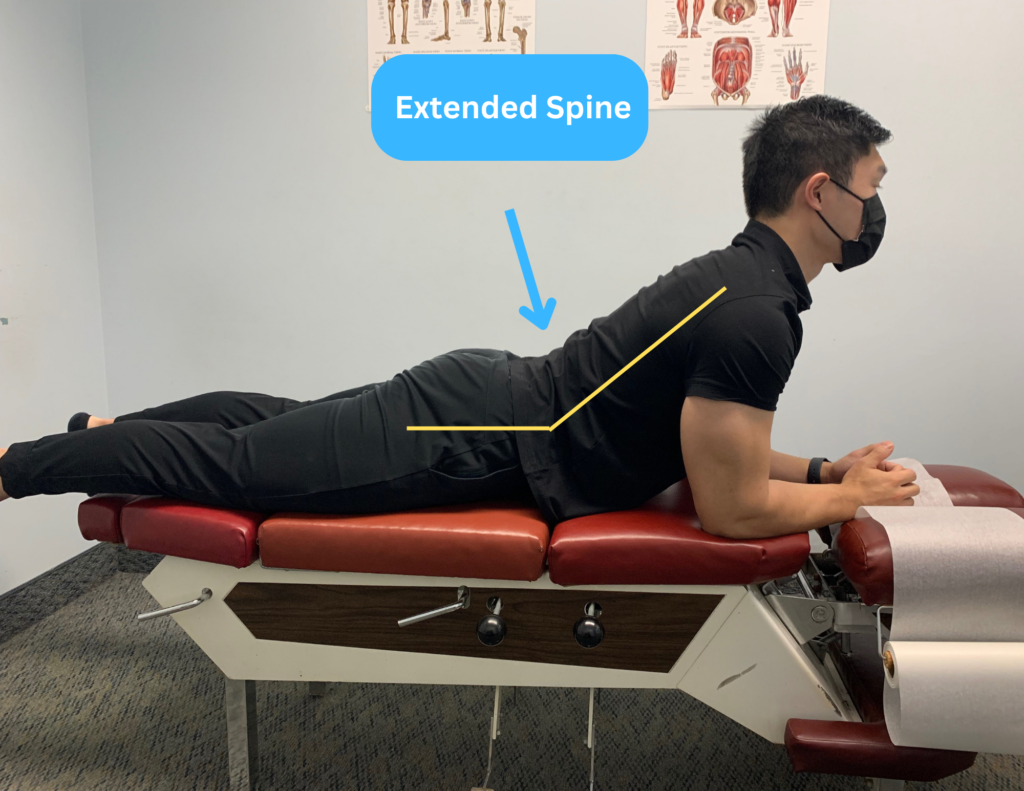
Figure 2. Prone Press Up
Standing Extension
- A variation of the prone position
- Place your hands around the crests of your pelvis
- Slowly extend the lower back over your hands
- Take a deep breath in, and exhale
- Return to starting position, repeat 10 times
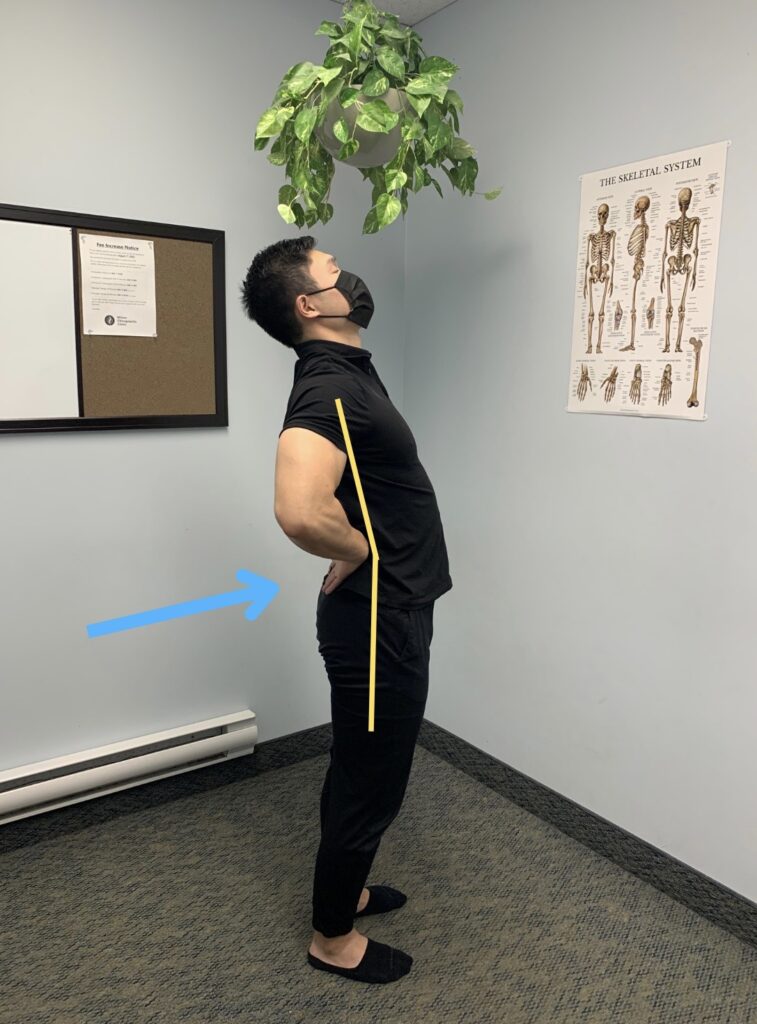
Figure 3. Standing Extension
Knee Flexion / Extension (Nerve Floss)
- Lie supine (on your back)
- Create tension in your abdomen/core
- Slowly drag your heel from a bent to an almost straight position
- This will gently glide the sciatic nerve, and activate muscles of the hip and knee
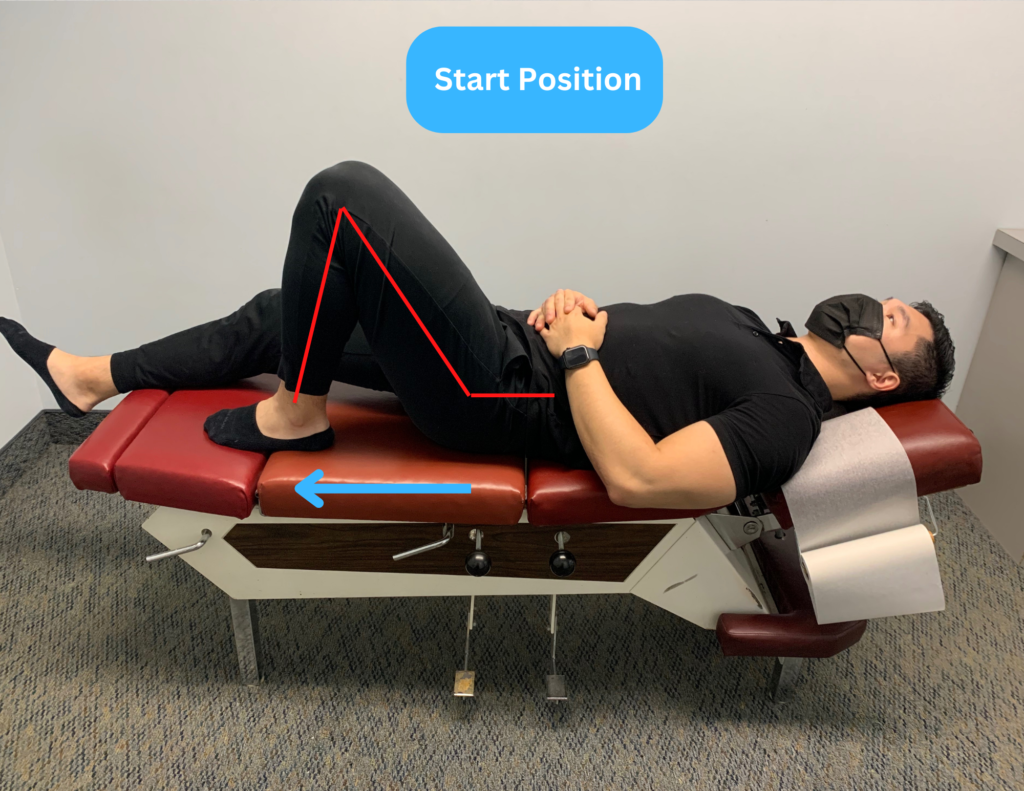
Figure 4. Nerve Floss Start Position
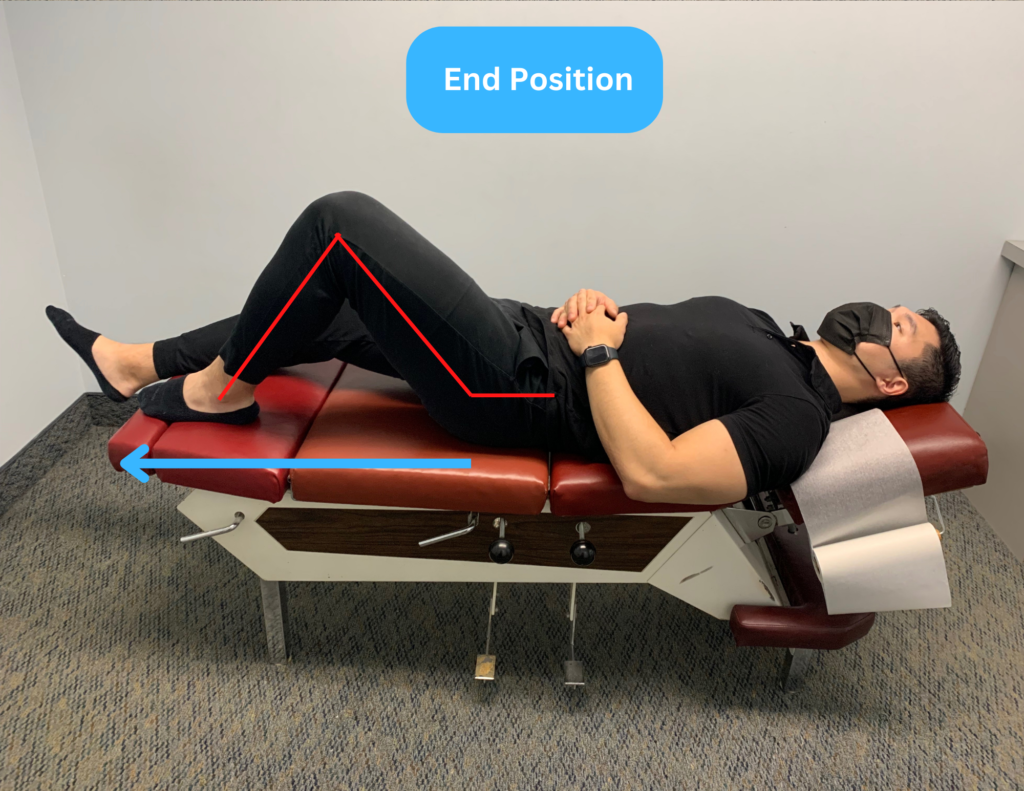
Figure 5. Nerve Floss End Position
‘Cow’ Position
- Start in a quadruped (all-4’s) position
- Slowly bring your chest tall, arching the back
- This will bring your low back into an extension position
- Return to neutral position
- Be careful not to flex the lower back upward, as this can aggravate the symptoms
Rock-Backs
- Start in a quadruped positon
- Contract your core
- Keep your spine neutral through the movement
- Slowly sink your hips towards your feet
- Stop the movement when you start to feel lower back pain
- This will keep the hips active, while teaching the spine to be neutral when the hips move
Hip Hinge / Mini-Squat
- Start in a standing position
- Contract your core
- Slowly push your hips back and downwards
- This exercise allows you to practice a squatting position while keeping your spine neutral
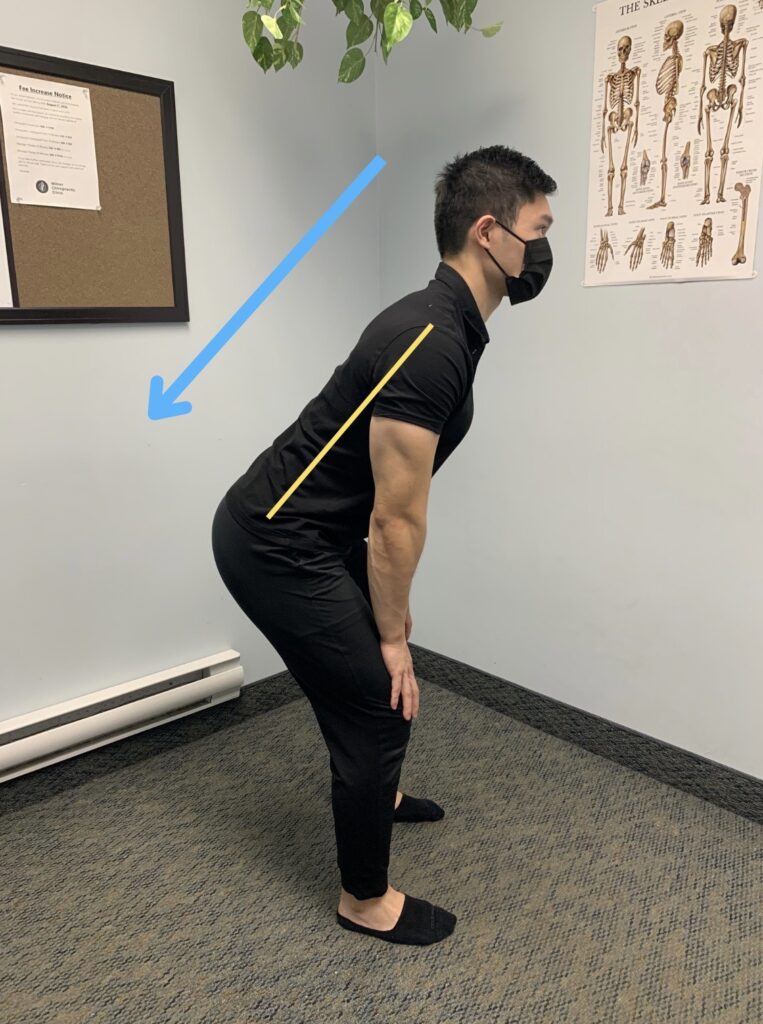
Figure 6. Standing Hip Hinge
Clinical Treatment for Sciatic Pain
Other than education and guided exercises, there are a variety of treatment techniques that can be used in the office which can help mitigate sciatica pain. All of which we perform at Milner Chiropractic Clinic:
Soft Tissue Therapy
By massaging and gliding through tight musculature affected by the sciatic nerve injury, patients can experience significant pain relief from looser muscles, and improved blood flow.
Chiropractic Adjustments
Chiropractors can perform lumbar spine adjustments if the patient is able, to restore spinal movement and decrease pain due to the muscle tightness.
Interferential Current (IFC) and TENS Machines
IFC and TENS machines produce electric currents that pass through the lumbar spine and muscles. They increase blood flow, and stimulate the muscles of the lumbar spine producing pain relief.
Clinical Taping
Placing therapeutic tape along the lumbar spine muscles and pelvis, the patient will be able to feel when the low back is stretching before it causes pain. Taping is preferable to a back brace, as it still allows for the patient to use their muscles on their own, preventing muscle atrophy. Whereas a back brace will cause the patient to rely on a device, instead of their own muscles.
Acupuncture
Chiropractors insert thin needles into the skin and muscles of the low back, which act to relax the nervous system and muscles of the lumbar spine.
When is Surgery Indicated?
Surgery is generally the last option when a patient is experiencing sciatic pain. There are usually a few requirements when considering surgery:
- The patient has tried a 4-6 week conservative treatment plan of strengthening exercises, manual therapy and pain management, with no improvement
- The patient has significant reduction in activities of daily living (inability to maintain hygiene, inability to sleep)
- The patient has imaging confirmation in the lumbar spine and sciatic nerve
It is important to know, that surgery is essentially a SECOND injury, and comes with its own complications. In some circumstances surgery can make a patient’s pain worse. Therefore when considering a surgical procedure, it is after exhausting all possible options, and consulting a surgical professional.
Final Thoughts
- Sciatica pain from the lower back is one of the most common disabling conditions in the world. It is one of the most common causes of missed work worldwide. However, most cases are self-limiting and improve conservatively without injections, medications or surgery.
- There are MANY ways of treating sciatic low back pain – including manual therapy, education, modifying activities, and progressive core stability exercises
Related Articles:
Milner Chiropractic Clinic – Low Back Pain 101
https://milnerchiropractic.ca/what-to-know-if-you-have-lower-back-pain/
Milner Chiropractic Clinic – Sciatic Nerve Pain
https://milnerchiropractic.ca/sciatica/
Ontario Chiropractic Association – Management of Back Pain
https://chiropractic.on.ca/self-management/seven-tips-to-get-your-back-on-track/
Cleveland Clinic
https://my.clevelandclinic.org/health/diseases/12792-sciatica
Disclaimer – the content on this blog is designed for educational and information purposes only, it is not intended for medical advice. If you are in pain, call your medical professional.
